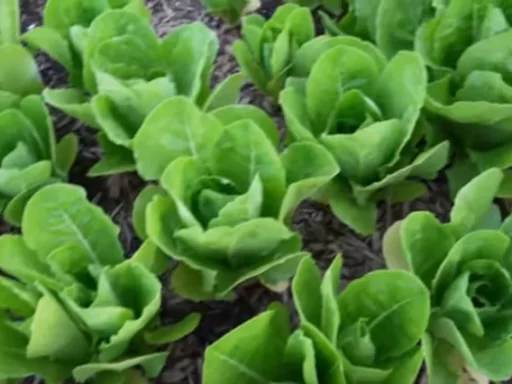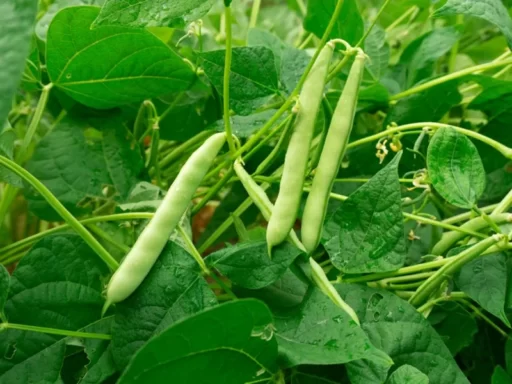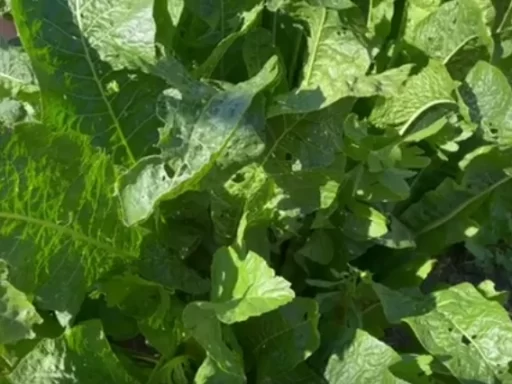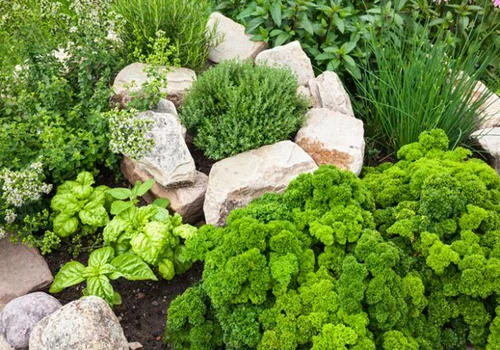Ginger is not only a flavorful spice but also a rewarding plant to grow at home. It’s surprisingly easy to cultivate, and the best part is that it will continue to produce year after year, saving you money and ensuring fresh, high-quality ginger right from your garden. Whether you’re an experienced gardener or just starting, this guide will walk you through the steps of growing ginger, including how to plant, care for, and harvest it.
1. Introduction to Ginger
Ginger (Zingiber officinale) is a tropical plant that is native to Southeast Asia. It has been used for thousands of years in cooking, medicine, and even as a natural remedy for a variety of ailments. What makes ginger unique is its rhizome—a modified stem that grows horizontally underground. This rhizome, often mistaken for a root, is the part we commonly use in cooking.
There are more than 1,000 different types of ginger, ranging from edible to inedible varieties. The plant is not only versatile in its uses but also resilient, making it a perfect addition to any home garden.
2. The Benefits of Growing Your Own Ginger
Growing ginger at home has several benefits. First and foremost, you’ll save money by having a constant supply of fresh ginger. Beyond the financial aspect, fresh ginger is more flavorful and aromatic than store-bought versions. Additionally, when grown in your garden, ginger is free from harmful chemicals and pesticides, making it a healthier option for your kitchen.
3. Understanding Ginger Rhizomes
To grow ginger, you don’t plant seeds but rather a rhizome. A rhizome is a thick, horizontal stem that sends out shoots above and roots below the soil. Ginger spreads by this method, making it an efficient plant to cultivate. When selecting a ginger rhizome to plant, choose a chunky, firm piece with multiple buds or “eyes,” which are small white nodes resembling horns. These buds will eventually sprout into new shoots.
4. Choosing the Right Rhizome
When selecting ginger rhizomes, you can purchase them from grocery stores, garden centers, or online. Look for firm, plump rhizomes, as shriveled or dried ones may not sprout. If possible, opt for organic ginger, as it’s less likely to have been treated with growth inhibitors.
For the best results, soak the ginger rhizome in warm water overnight before planting. This helps to remove any residual growth inhibitors and prepares the rhizome for germination.
5. Ideal Soil and Growing Conditions
Ginger thrives in humid, tropical environments, so it’s important to replicate these conditions at home. Ginger prefers well-draining soil with high organic content. You can create the perfect growing medium by mixing equal parts of garden compost and fine bark chippings. This combination provides both moisture retention and good drainage, essential for healthy ginger growth.
6. Choosing the Right Pot
Because ginger spreads horizontally, it’s best to plant it in wide, shallow containers. Ensure that your pot has adequate drainage holes, as ginger does not tolerate waterlogged soil. When planting, place the rhizome just below the surface of the soil, making sure it’s not buried too deep, as this could cause it to rot.
7. When and Where to Plant Ginger

The best time to plant ginger is in early spring or late winter when temperatures start to rise. However, you can also start planting in autumn if you have a warm indoor space like a greenhouse or sunroom where the plants can overwinter.
Ginger loves humidity and indirect sunlight, making it an ideal plant for shaded areas of your garden or indoor spaces that get filtered light. In cooler climates, ginger can be grown indoors in a greenhouse or conservatory, where it’s protected from frost.
8. Watering and Humidity Requirements
During the early stages of growth, ginger rhizomes don’t require much water. It’s essential to keep the soil moist but not overly wet, as this could lead to root rot. Once the ginger has sprouted and is actively growing, increase your watering schedule to mimic the tropical rainforests where ginger naturally thrives.
In hot weather, watering the plant daily is necessary to prevent water stress. Additionally, spraying the leaves with water helps increase humidity, which ginger loves.
9. Fertilizing Ginger
Ginger is a relatively hungry plant, meaning it benefits from nutrient-rich soil. As the plant grows, consider adding a slow-release organic fertilizer or applying liquid seaweed feed during the growing season. Regular feeding will encourage healthy growth and a larger harvest.
10. Overwintering Ginger
As the temperature drops in autumn and winter, ginger plants will naturally enter dormancy. In cooler climates, you should reduce watering and keep the plants in a warm, humid environment. If you’re growing ginger outdoors, it’s important to move the plants indoors or to a sheltered area before the first frost. Once the top growth dies back, you can either leave the rhizomes in the soil or gently remove and store them in a cool, dry place until spring.
11. Harvesting Ginger
Ginger can be harvested once the plant is fully mature, typically 8 to 10 months after planting. You can start harvesting small amounts of ginger by carefully digging around the base of the plant and breaking off a piece of the rhizome. This method allows the rest of the plant to continue growing and producing.
For a more substantial harvest, you can dig up the entire plant once the leaves have died back and the rhizomes are fully developed.
12. Growing Ginger in Different Climates
Ginger is a versatile plant that can be grown in various climates, provided you give it the right conditions. In tropical and subtropical regions, ginger can be grown outdoors year-round. In cooler climates, you’ll need to grow ginger in containers so you can move them indoors during winter. Make sure to protect ginger plants from direct sunlight in hot climates, as too much heat can scorch the leaves.
13. Frequently Asked Questions About Growing Ginger
- How long does it take to grow ginger? Ginger typically takes 8 to 10 months to reach full maturity, but you can start harvesting small amounts after 5 to 6 months.
- Can I grow ginger indoors? Yes, ginger can be successfully grown indoors in containers. Make sure to place it in a warm, humid spot with indirect sunlight.
- How do I store harvested ginger? Fresh ginger can be stored in the refrigerator for up to 3 weeks. You can also freeze it for longer storage.
- Do I need to fertilize ginger? Yes, ginger benefits from regular feeding with an organic fertilizer or liquid seaweed feed during the growing season.
- What kind of soil does ginger need? Ginger prefers well-draining soil rich in organic matter. A mix of compost and fine bark chippings works well.
- How do I know when ginger is ready to harvest? Ginger is ready to harvest when the leaves turn yellow and die back, usually after 8 to 10 months of growth.
- Can I grow ginger from store-bought ginger? Yes, you can grow ginger from store-bought rhizomes. Just ensure they are fresh and firm, and soak them overnight before planting.






